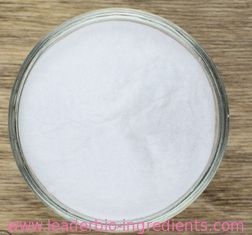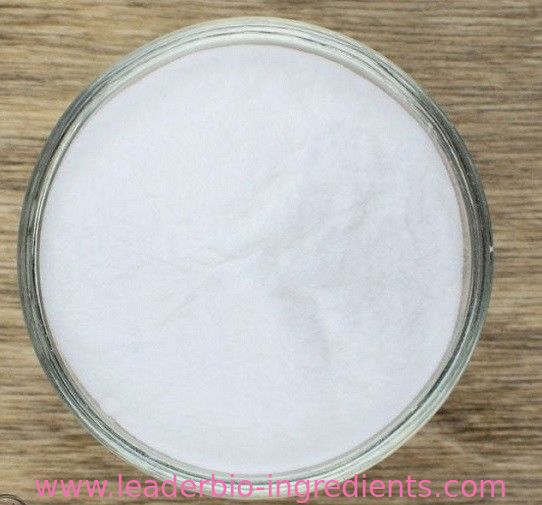
China Largest Factory Manufacturer L-Cystine CAS 56-89-3 For stock delivery
-
Purity99.9%
-
UseHealth Care
-
OriginChina
-
Package1KG/Tin 25KG/Drum*Carton
-
ManufacturerXI'AN LEADER BIOCHEMICAL ENGINEERING CO.,LTD
-
Place of OriginCHINA
-
Brand NameLeader
-
CertificationISO,GMP,SGS,HALA,KOSER,HACCP
-
Model NumberLD
-
Minimum Order Quantity25KGS
-
PriceNegotiate Depend on order quantity
-
Packaging Details25KG/Drum
-
Delivery Time2-3 working days
-
Payment TermsWestern Union, MoneyGram, T/T, L/C
-
Supply Ability10MTS/Month
China Largest Factory Manufacturer L-Cystine CAS 56-89-3 For stock delivery
| L-Cystine Basic information |
| Product Name: | L-Cystine |
| Synonyms: | (r-(r*,r*))-3,3’-dithiobis(2-aminopropanoicacid);1-cystine;3,3’-dithiobis(2-amino-,(r-(r*,r*))-propanoicaci;3,3’-dithiobis(2-aminopropanoicacid);3,3’-dithiobis-l-alanin;3,3'-Dithiobis(2-aminopropanoic acid);3,3'-Dithiodialanine;Alanine, 3,3'-dithiobis- |
| CAS: | 56-89-3 |
| MF: | C6H12N2O4S2 |
| MW: | 240.3 |
| EINECS: | 200-296-3 |
| Product Categories: | Amino Acids;Cysteine [Cys, C];Food and Feed Additive;Amino Acids;Nutritional Supplements;L-Amino Acids;Amino Acid Derivatives;amino |
| Mol File: | 56-89-3.mol |
| L-Cystine Chemical Properties |
| Melting point | >240 °C (dec.)(lit.) |
| alpha | -224 º(c=2 in 1M HCl) |
| Boiling point | 468.2±45.0 °C(Predicted) |
| density | 1.68 |
| refractive index | -222.5 ° (C=1, 1mol/L HCl) |
| storage temp. | Store at RT. |
| solubility | 1 M HCl: 100 mg/mL |
| form | Powder/Solid |
| pka | 1.0, 2.1, 8.02, 8.71(at 25℃) |
| color | White |
| optical activity | [α]20/D 219±5°, c = 1% in 1 M HCl |
| Water Solubility | 0.112 g/L (25 ºC) |
| Merck | 14,2782 |
| BRN | 1728094 |
| Stability: | Stable. Incompatible with strong oxidizing agents. |
| InChIKey | LEVWYRKDKASIDU-IMJSIDKUSA-N |
| CAS DataBase Reference | 56-89-3(CAS DataBase Reference) |
| NIST Chemistry Reference | L-Cystine(56-89-3) |
| EPA Substance Registry System | L-Cystine (56-89-3) |
| Safety Information |
| Hazard Codes | Xi,Xn |
| Risk Statements | 36/37/38-22 |
| Safety Statements | 26-36-24/25 |
| RIDADR | 2811 |
| WGK Germany | 3 |
| RTECS | HA2690000 |
| Hazard Note | Irritant |
| TSCA | Yes |
| PackingGroup | III |
| HS Code | 29309014 |
| MSDS Information |
| Provider | Language |
|---|---|
| 2-Amino-3-[(2-amino-2-carboxyethyl)dithio]propanoic acid | English |
| ACROS | English |
| SigmaAldrich | English |
| ALFA | English |
| L-Cystine Usage And Synthesis |
| Description | L-cystine (formula: (SCH2CH(NH2) CO2H)2), the L-form of cystine) is a covalently linked dimeric nonessential amino acid formed through the oxidation of cysteine. It is contained in many foods including eggs, meat, dairy products, and whole grains as well as in skin and hairs. L-cystine and L-methionine are the amino-acids required for wound healing and formation of epithelial tissue. It is able to stimulate the hematopoietic system and promote the formation of white and red blood cells. It can also be used as a component of parental and enteral nutrition. It can also be used for the treatment of dermatitis and protection of liver function. L-cystine is manufactured through the enzymatic conversion from DL-amino thiazoline carboxylic acid. |
| References | http://www.ajiaminoscience.com/products/manufactured_products/l-amino_acids/L-Cystine.aspx https://pubchem.ncbi.nlm.nih.gov/compound/L-cystine#section=Pharmacology https://en.wikipedia.org/wiki/Cystine |
| Chemical Properties | A white or almost white, crystalline powder, practically insoluble in water and in alcohol. |
| Uses | L-Cystine is a non-essential amino acid for human development. L-Cystine is formed by the dimerization of two cysteines through the sulfur. |
| Safety Profile | Low toxicity by ingestion. When heated to decomposition it emits toxic fumes of PO, and SOx |
| Purification Methods | Cystine disulfoxide impurity is removed by treating an aqueous suspension with H2S. The cystine is filtered off, washed with distilled water and dried at 100o under a vacuum over P2O5. Crystallise it by dissolving in 1.5M HCl, then adjusting to neutral pH with ammonia. Likely impurities are D-cystine, meso-cystine and tyrosine. Also purify it by dissolving it in 10% NH3 and adding gradually dilute AcOH until the point of precipitation and cooling slowly [Dughton & Harrison Acta Cryst 12 396, 402 1959.] Alternatively dissolve it in 6N NH4OH and evaporate it at room temperature for crystallisation to occur. [Chaney & Steinrauf Acta Cryst 30 711 1974, Beilstein 4 IV 3155.] |
| L-Cystine Preparation Products And Raw materials |
| Raw materials | Sodium hydroxide-->Hydrochloric acid-->Activated carbon-->Activated carbon,decolor-->Α-PROTEIN-->Ethylenediaminetetraacetic acid-->L(+)-Arginine-->L-Histidine-->Boc-D-Tyr-OH-->DL-Serine-->terylene-->N-CARBOBENZOXY-DL-LEUCINE-->SILK-->KERATIN |
| Preparation Products | Cilastatin-->L-Cysteine-->L-Cysteine hydrochloride anhydrous-->L-Cysteine hydrochloride monohydrate-->DL-Cystine |
